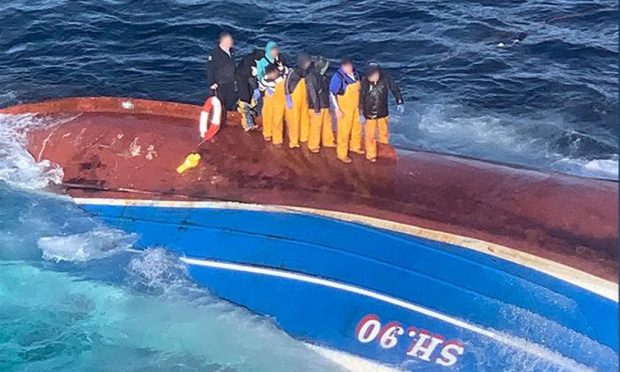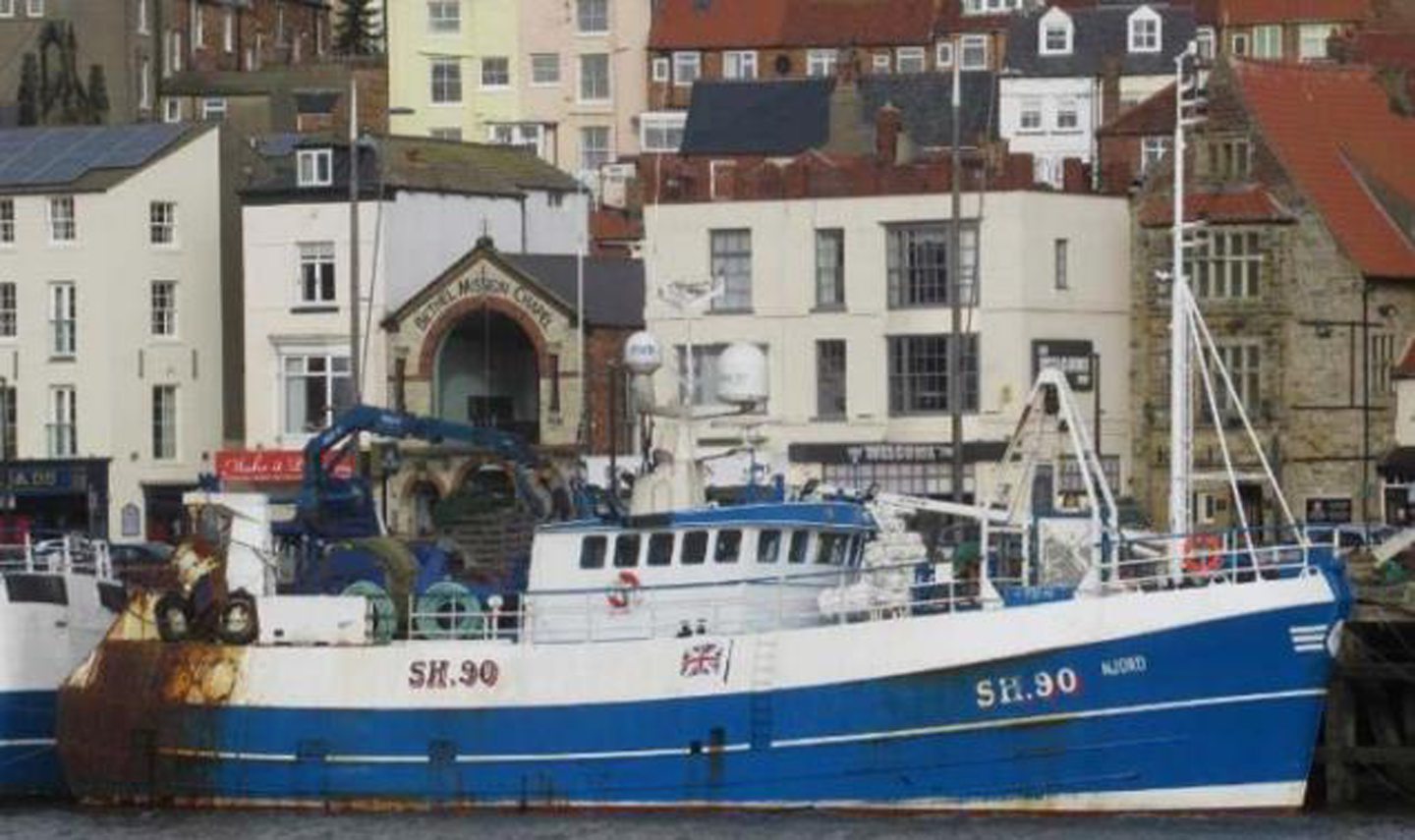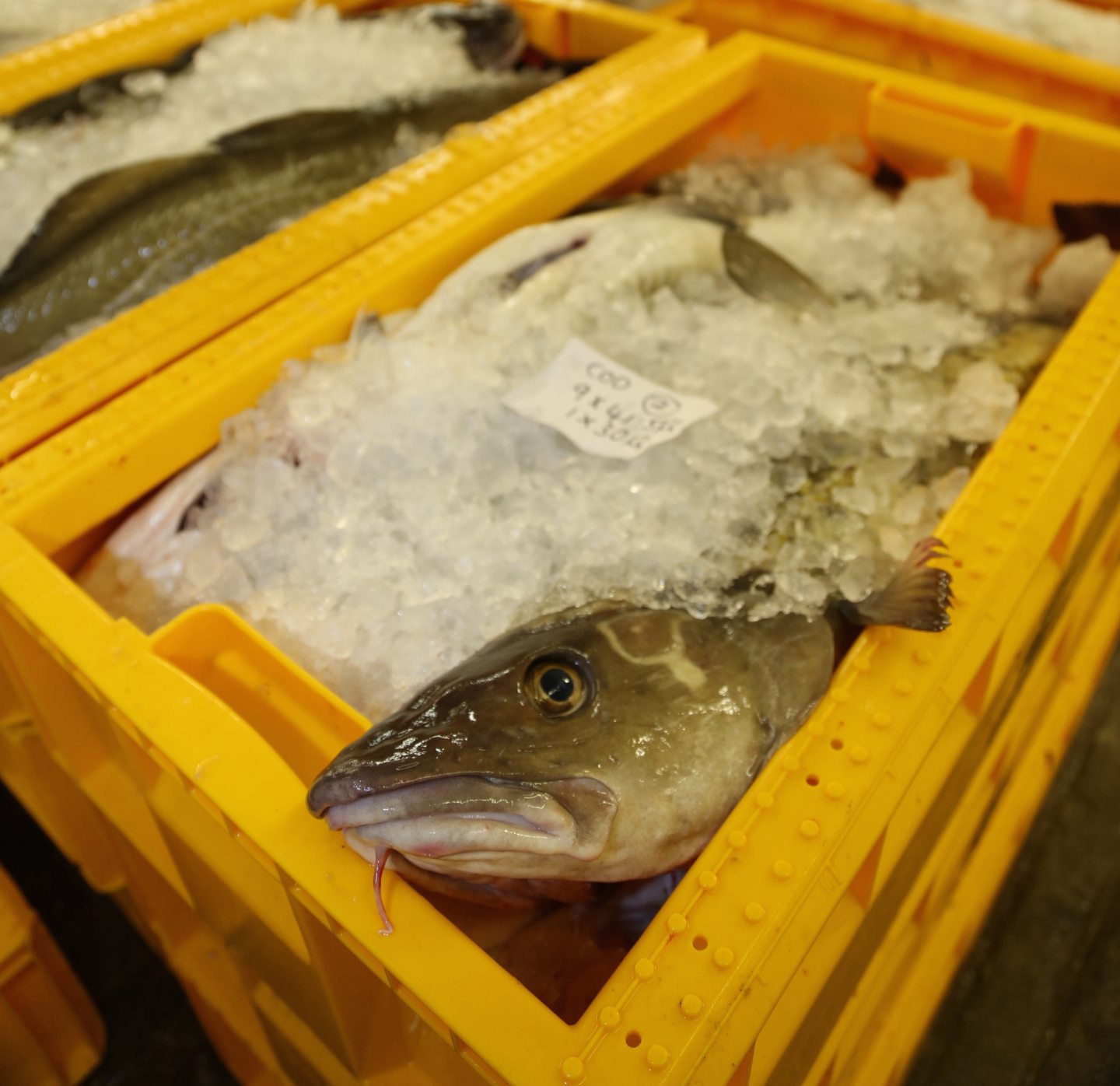The long-awaited report into the sinking of the Njord fishing trawler has revealed crew failings, modifications to the vessel and an unexpectedly huge catch all contributed to the vessel capsizing and the death of a deckhand.
The Marine Accident Investigation Branch (MAIB) has created a detailed timeline of the tragedy following an extensive probe.
It reveals the vessel had left Peterhead bound for rich fishing grounds in the North Sea on March 5, 2022.
The Njord, built in 1992, had eight crew members on board and equipment to reel in a catch of white fish – having been converted from its previous life as a prawn boat.
On the morning of March 6, they netted an unusually large haul of fish— enough to fill as many as 1,000 boxes.
The net was brought to the starboard side and divided into manageable one-ton loads and the catch was transferred into the fish hopper until it was full.
By then, the Njord was listing 15 to 20 degrees to starboard – but investigators believe the crew’s joy at the size of the catch led them to overlook that.
The crew took off their personal flotation devices and began processing the fish.
When water began building up in the area, the crew bailed it out.
The Incident
The report reveals the skipper at the helm of the trawler peered inside the hopper and realised they could begin loading more fish.
And the crew then went to the top deck without putting their flotation devices back on.
They conducted two more lifts from the net and released them into the fish hopper.
But on the third lift, the starboard list became so severe that the crew abandoned the operation.
The two crew members in the fish room were told to evacuate the area.
The skipper deduced that the weight of the fish in the net had caused the starboard list.
By this time, the crew had gathered on the port side.
One of the deckhands was told to seal the weathertight door on the starboard side, where he saw the water level rising.
Meanwhile, the skipper, who was trying to cut the net, sensed the trawler was close to capsizing and made his way back to the others.
At about 1.30pm, Njord’s beacon stopped transmitting its location and the crew were forced to climb over the boat’s railing onto the port-side hull.
One crew member slipped into the water but made it back to safety.
The Rescue
By this time, the crew’s emergency beacon had activated, alerting the Norwegian Coastguard.
A nearby vessel, the Olympic Challenger, changed course to head towards the crew in distress.
At 2.16pm, a search and rescue helicopter, deployed from a nearby oil platform, arrived.
Four minutes later, the Njord sank, sending the eight crew members into the water.
The Olympic Challenger’s fast rescue craft was launched and raced towards the scene.
Six men clung to the one available life ring while the two others tried to stay afloat.
The helicopter winchman was able to rescue one of the isolated crew members, while the second crew member—a deckhand—was eventually recovered from the water, sadly unresponsive.
They were lifted onboard the helicopter, where the medic began trying to resuscitate the deckhand.
Meanwhile, the fast rescue craft recovered the other six crew members from the water.
The helicopter eventually arrived at Haukeland University Hospital in Bergen, but despite attempts to save the deckhand, he died from drowning.
His name was Ronald MacKinnon, a 56-year-old UK national and career fisherman who had worked for the skipper of the Njord for many years.
Aftermath and Investigation
Following the incident, the MAIB was tasked with determining what happened.
The MAIB pointed to modifications made in 2021, which included additional equipment that caused stability issues.
According to the report: “The skipper had confidence in Njord’s safety and operational efficiency.
“They believed the modifications made in 2021 enhanced the vessel’s fishing performance and considered the changes to be minor, expecting them to have minimal, if any, impact on stability.”
The MAIB said the modifications to the Njord had not been flagged to the Maritime and Coastguard Agency (MCA), which would have inspected the vessel for stability issues.
Having recently switched from prawns to white fish, the MAIB noted the crew may not have been familiar with a “normal” catch size for white fish.
The haul was 30 times the normal size, and the crew were pleased with how much money they could make.
The MAIB concluded the initial haul was over 1,000 boxes of fish instead of 700 to 750 boxes.
Tragedy has led to new maritime guidance
The report states: “It is likely that the new experience of such a large catch led the crew to perceive Njord’s heavy listing as normal under the circumstances.
“A large catch meant significant remuneration for all of the crew as share fishermen, and their delight might have influenced their judgement of and consideration towards safety when dealing with this exceptional volume of fish.
“Had the net been cut away immediately and the additional fish not been added to the hopper, the vessel might have been saved.”
The MAIB added that Mr MacKinnon would have had a much greater chance of surviving if he had been wearing his personal flotation device.
The MCA has issued guidance that operators must seek approval for modifications made to vessels to ensure safety.



Conversation